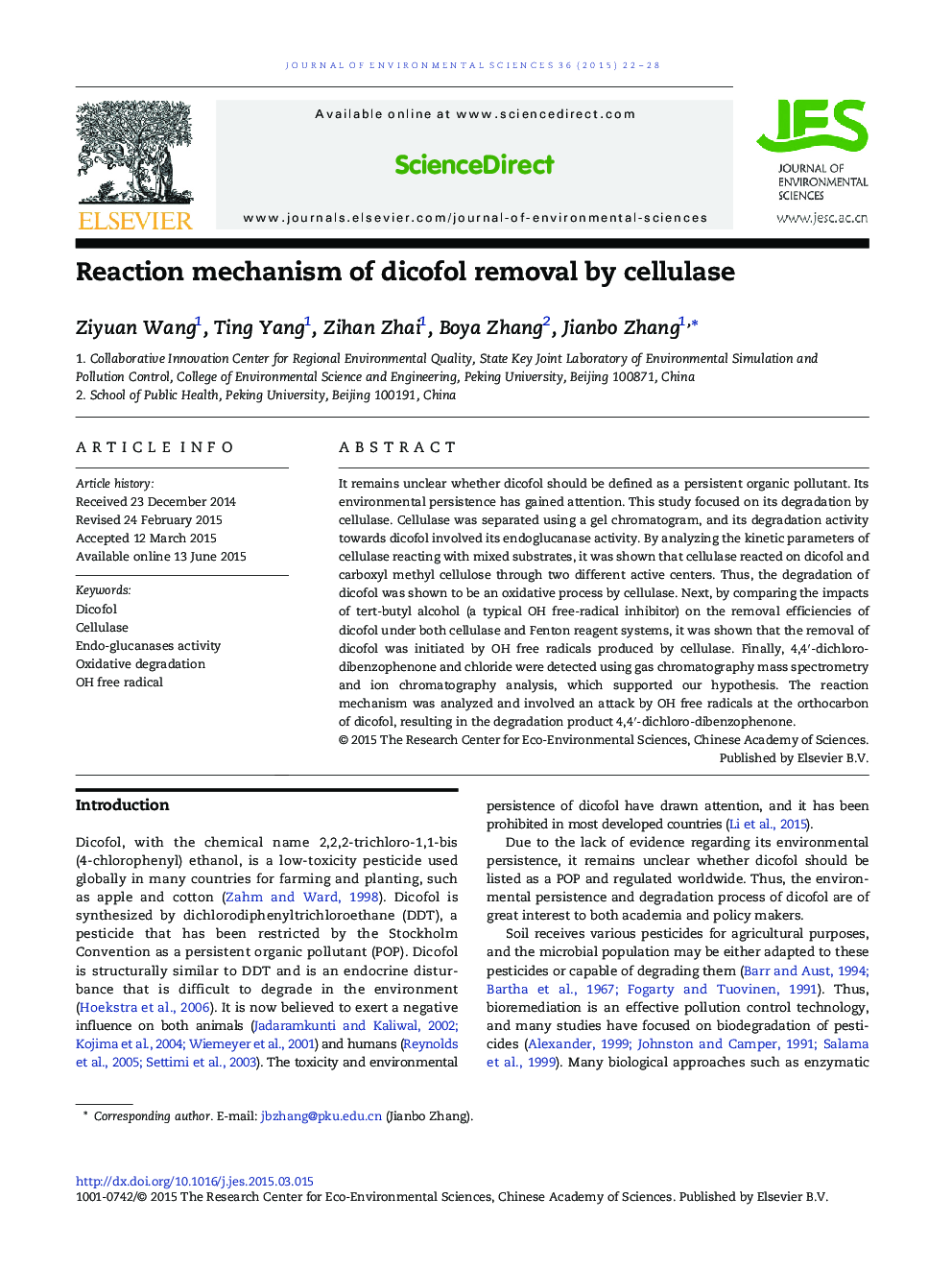| Article ID | Journal | Published Year | Pages | File Type |
|---|---|---|---|---|
| 4453953 | Journal of Environmental Sciences | 2015 | 7 Pages |
It remains unclear whether dicofol should be defined as a persistent organic pollutant. Its environmental persistence has gained attention. This study focused on its degradation by cellulase. Cellulase was separated using a gel chromatogram, and its degradation activity towards dicofol involved its endoglucanase activity. By analyzing the kinetic parameters of cellulase reacting with mixed substrates, it was shown that cellulase reacted on dicofol and carboxyl methyl cellulose through two different active centers. Thus, the degradation of dicofol was shown to be an oxidative process by cellulase. Next, by comparing the impacts of tert-butyl alcohol (a typical OH free-radical inhibitor) on the removal efficiencies of dicofol under both cellulase and Fenton reagent systems, it was shown that the removal of dicofol was initiated by OH free radicals produced by cellulase. Finally, 4,4′-dichloro-dibenzophenone and chloride were detected using gas chromatography mass spectrometry and ion chromatography analysis, which supported our hypothesis. The reaction mechanism was analyzed and involved an attack by OH free radicals at the orthocarbon of dicofol, resulting in the degradation product 4,4′-dichloro-dibenzophenone.
Graphical abstractFigure optionsDownload full-size imageDownload as PowerPoint slide
